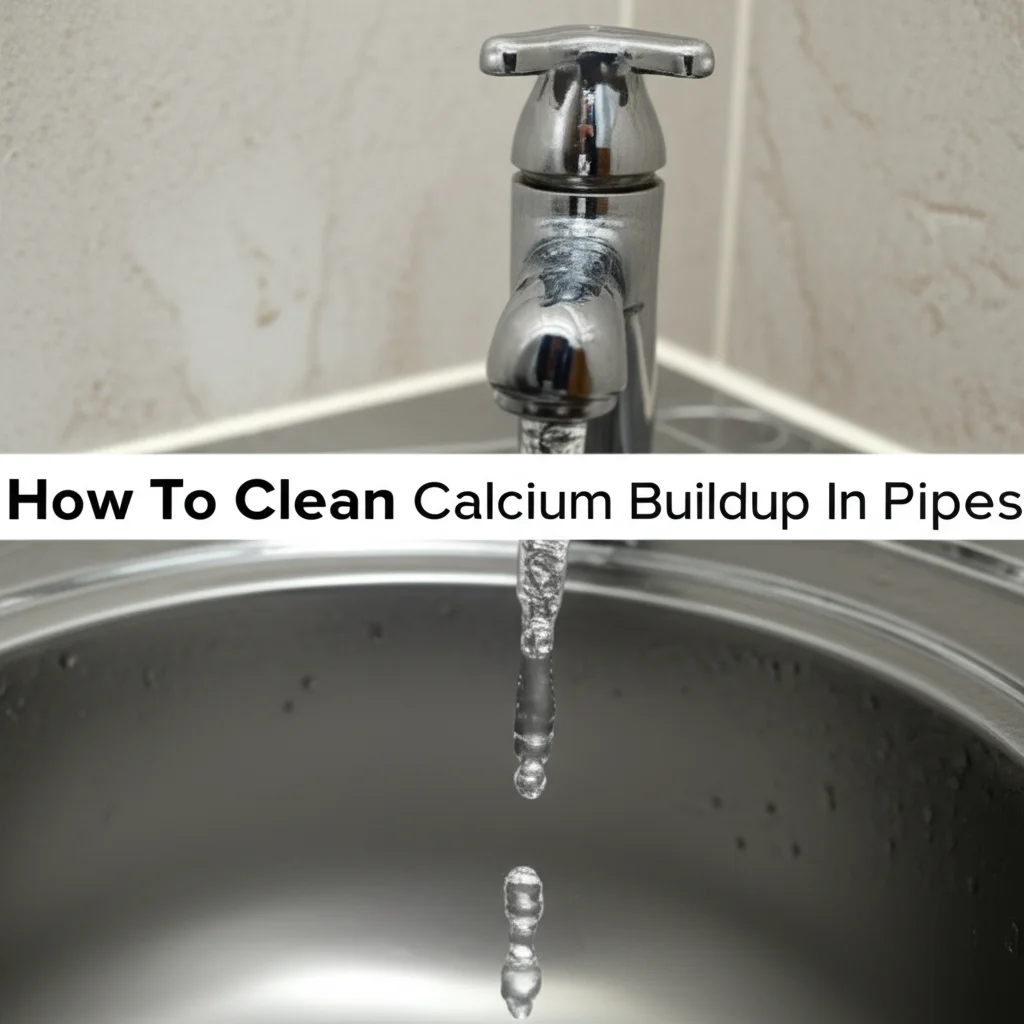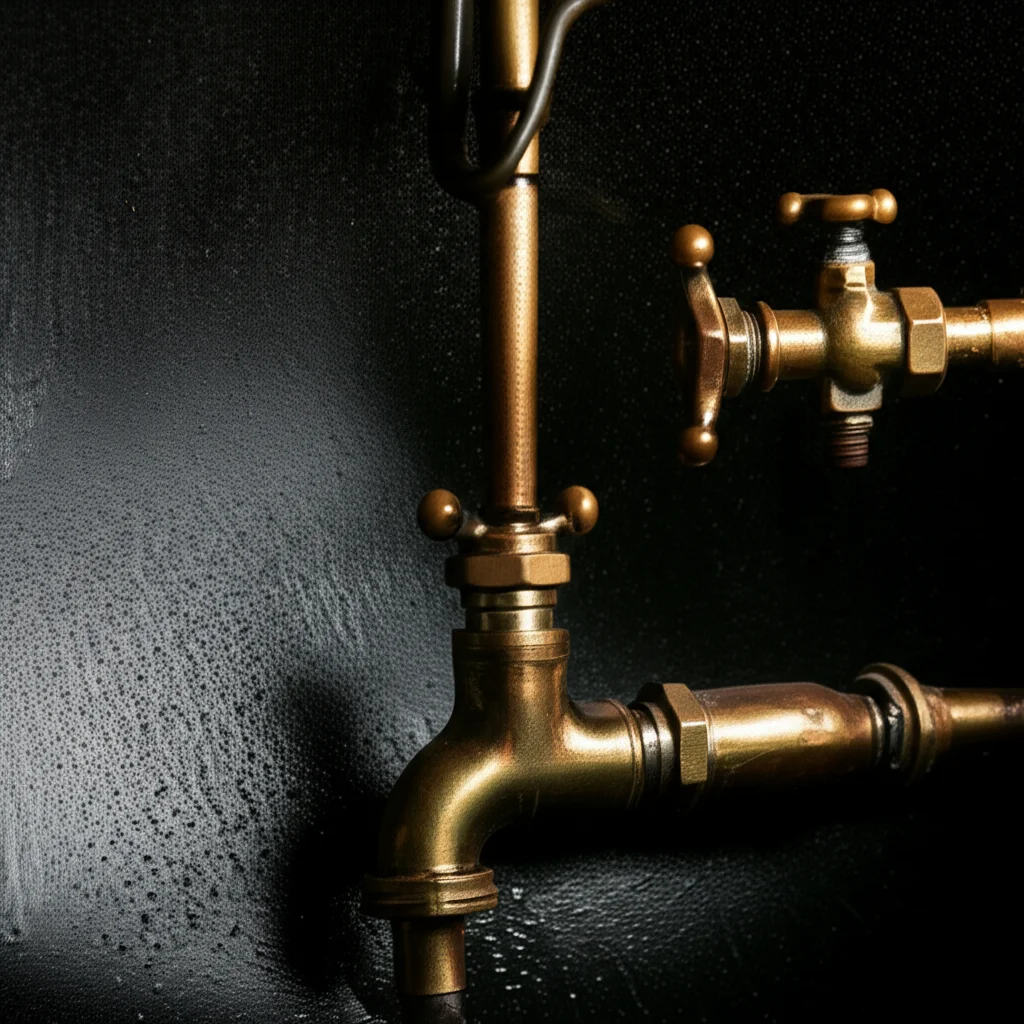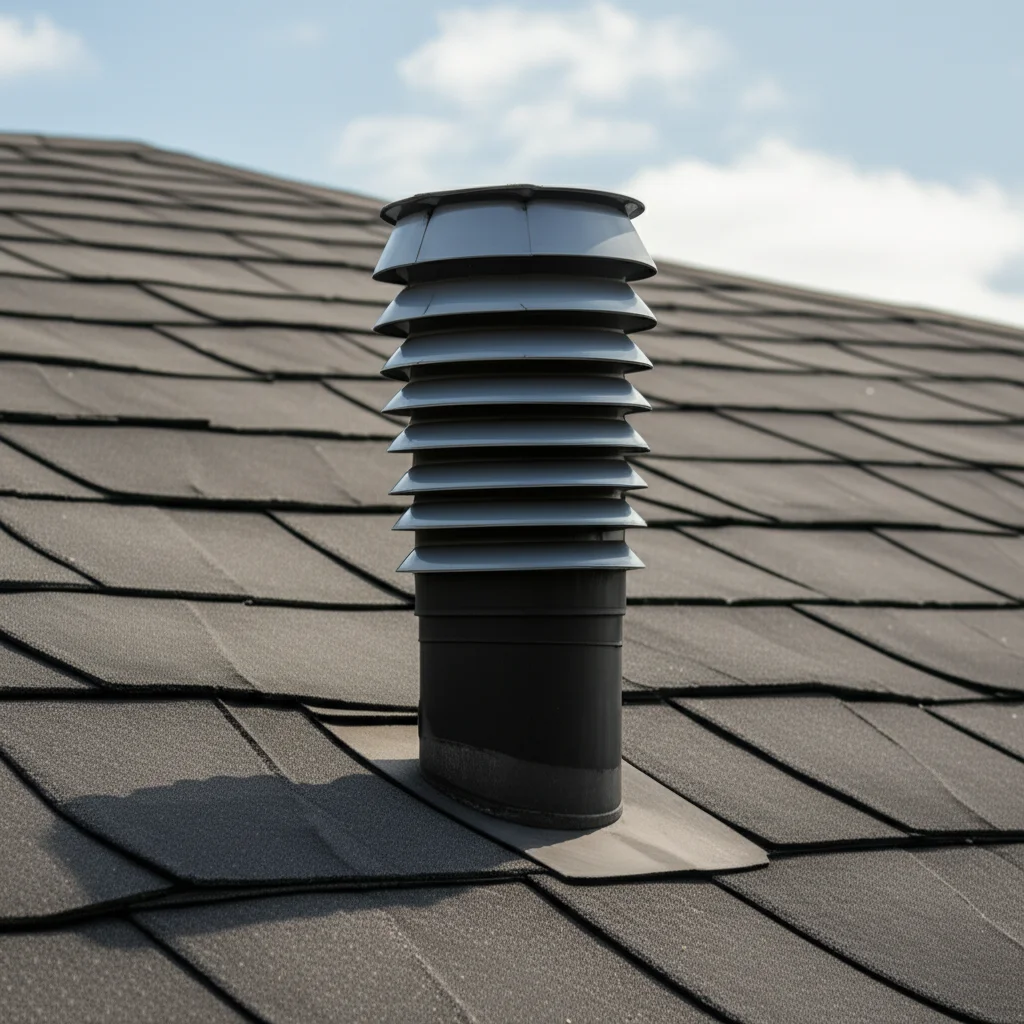· Todd Martin · Home Maintenance · 13 min read
How To Clean Calcium Buildup In Pipes

Conquer Calcium: How To Clean Buildup In Your Pipes
Have you noticed your water pressure dropping? Are your drains running slower than usual? These are often clear signs of calcium buildup in pipes. This common household issue comes from hard water, which contains high levels of dissolved minerals. Ignoring this problem can lead to expensive plumbing repairs or even pipe replacement.
Understanding how to clean calcium buildup in pipes is essential for any homeowner. I will guide you through effective strategies, from simple DIY solutions to when you really need a professional plumber. We will look at natural remedies, chemical products, and even mechanical methods. Let’s make sure your water flows freely once more.
Takeaway
- Identify early signs of calcium buildup like reduced water pressure or slow drains.
- Use natural solutions like vinegar and baking soda for mild buildup.
- Consider chemical descalers for stubborn deposits, always following safety warnings.
- Explore mechanical options such as snaking or hydro-jetting for severe clogs.
- Implement preventive measures like water softeners to stop future accumulation.
- Know when to call a professional plumber for significant blockages or recurring issues.
To effectively clean calcium buildup in pipes, you can use acidic solutions like vinegar for minor blockages or specialized chemical descalers for tougher deposits. For severe clogs, mechanical methods such as snaking or professional hydro-jetting are often necessary to restore proper water flow and prevent further damage.
Understanding Calcium Buildup: What It Is and Why It Happens
Calcium buildup, also known as limescale, forms when hard water flows through your pipes. Hard water contains high levels of dissolved minerals, especially calcium and magnesium carbonates. As water evaporates or is heated, these minerals are left behind, forming a hard, crusty deposit. This deposit sticks to the inside surfaces of your pipes.
Over time, this accumulation narrows the pipe’s diameter. This restriction reduces water pressure and slows drainage. It can even lead to complete blockages if left untreated. The process happens gradually, often unnoticed until problems become significant. I have seen many homes affected by this silent pipe killer.
Several factors contribute to calcium buildup. The primary factor is the hardness of your local water supply. Many regions have naturally hard water due to the geology. Hot water pipes and appliances are particularly vulnerable to limescale formation. Heat causes minerals to precipitate out of the water more quickly.
Old pipes made of certain materials can also promote buildup. Galvanized steel pipes, for instance, are prone to corrosion, which creates rough surfaces where minerals can cling easily. This problem is not just about aesthetics; it impacts your plumbing system’s efficiency and lifespan. Regular maintenance helps keep things flowing smoothly.
Early Signs of Calcium Buildup in Pipes
Catching calcium buildup early saves you time and money. The first noticeable sign is often a decrease in water pressure. You might find your showerhead sprays weakly, or your faucets deliver only a trickle. This happens because the mineral deposits narrow the pipes, restricting water flow. It is a simple concept: less space means less water can pass through.
Another common indicator is slow drainage. If your sink or bathtub drains slowly, but there is no obvious hair or soap clog, calcium buildup might be the culprit. The mineral deposits cling to the inner walls of the drain pipes, catching debris and slowing water down. I have noticed this in my own home before. It is a clear warning sign that something is amiss inside your plumbing.
Look for visible signs of limescale on fixtures, too. White, crusty deposits on your faucets, showerheads, or around drain openings suggest hard water is present in your home. If these deposits appear on visible surfaces, it is a strong indication they are also forming inside your pipes. Cleaning these external areas might give you a clue about internal issues. For instance, you might have already tackled calcium buildup on your pool tile or noticed buildup on your faucet.
Strange noises from your plumbing system can also signal a problem. You might hear rattling or banging sounds as water struggles to pass through constricted pipes. Appliances like water heaters or dishwashers might also perform poorly. They can take longer to heat water or clean dishes because of mineral deposits within their components. These are all subtle hints your pipes need attention.
Natural and DIY Methods to Clean Calcium Buildup
For minor calcium buildup, natural remedies offer an environmentally friendly and cost-effective solution. The most popular choice is vinegar, especially white vinegar. It is a mild acid that can dissolve mineral deposits without harming most pipes. I often recommend starting with this simple method. You can easily get it from your local grocery store.
To use vinegar for drains, pour one cup of baking soda down the affected drain. Let it sit for a few minutes. Then, follow with two cups of white vinegar. The combination creates a fizzing reaction that helps break down the deposits. Cover the drain to keep the reaction working within the pipe. Allow it to sit for at least 30 minutes, or even overnight for better results. This method is similar to how you might clean your shower with baking soda or clean your dishwasher with vinegar and baking soda.
After waiting, flush the drain with hot water. Boiling water helps rinse away the loosened deposits. Repeat this process weekly for a few weeks if the buildup is significant. For visible calcium deposits on fixtures like showerheads, you can remove the head and soak it in a bowl of vinegar overnight. This dissolves the mineral crust, restoring water flow. You might find similar advice on how to clean a shower head with vinegar.
Citric acid is another natural alternative, often sold as a powder. It works similarly to vinegar, breaking down limescale effectively. Mix about half a cup of citric acid powder with a gallon of hot water. Pour this solution down the drain and let it sit for several hours. Citric acid is slightly stronger than vinegar. Always flush thoroughly with clean water after use to clear away any remaining acid. These natural methods are gentle yet effective for routine maintenance.
Chemical Solutions for Stubborn Pipe Buildup
When natural methods fall short, chemical descalers can be a powerful option for tough calcium buildup. These products typically contain stronger acids or chelating agents designed to dissolve mineral deposits. They work by reacting directly with the calcium and magnesium carbonates, breaking them down into a soluble form that can be flushed away. It is important to choose the right product for your specific pipe material.
Before using any chemical cleaner, read the instructions carefully. Safety is paramount. Always wear gloves and eye protection to prevent skin and eye irritation. Ensure good ventilation in the area where you are working. Chemical fumes can be harsh and harmful if inhaled. I always open windows and turn on exhaust fans when using these products.
Follow the manufacturer’s directions regarding the amount to use and the soaking time. Overuse or leaving the solution in the pipes for too long can damage certain plumbing materials. Some chemical descalers are specifically formulated for different pipe types, such as PVC, copper, or galvanized steel. Using the wrong type can lead to pipe corrosion or leaks. Always check the product label for compatibility.
After the recommended soaking time, flush the pipes thoroughly with a large volume of water. This removes the dissolved minerals and any remaining chemical residue. Never mix different chemical cleaners, as this can create dangerous reactions or toxic fumes. If you are unsure about using a chemical solution, it is always safer to consult a plumbing professional.
Mechanical Methods for Removing Pipe Deposits
For severe calcium buildup or complete blockages, mechanical methods often become necessary. These techniques physically break apart or remove the mineral deposits from inside the pipes. One common method is using a plumber’s snake, also known as an auger. A snake is a long, flexible cable with a corkscrew-like tip. You feed it into the pipe, turning it to bore through the obstruction.
A drain snake can effectively clear solid clogs caused by heavy mineral deposits. The tip of the snake grinds and breaks up the calcium, allowing water to flow again. Manual snakes are suitable for accessible drains and minor clogs. For deeper or more stubborn blockages, a motorized drain snake or a professional-grade auger might be needed. These tools provide more power and reach further into the plumbing system.
Hydro-jetting is a powerful mechanical method used by professionals. This technique uses a high-pressure stream of water to scour the inside of pipes. The water jet is strong enough to blast away even the toughest calcium buildup, grease, and other debris. It cleans the pipe walls thoroughly, leaving them almost like new. This method is highly effective for complete restoration of pipe diameter.
Hydro-jetting requires specialized equipment and training. It is not a DIY task. Incorrect use can damage pipes, especially older or weaker ones. Professionals assess the pipe material and condition before applying this method. While it is more expensive than DIY options, hydro-jetting provides a long-term solution for severe buildup. For issues like sediment out of a well, similar professional intervention is often best. It ensures thorough and safe cleaning.
Preventing Future Calcium Buildup
Preventing calcium buildup is always better than treating it. Regular maintenance is key to keeping your pipes clear. One simple habit is to flush your drains with hot water periodically. This helps to dissolve minor mineral accumulations before they harden and become a problem. I try to do this weekly in my sinks and showers.
Consider installing a water softener system if you live in an area with particularly hard water. A water softener removes the calcium and magnesium ions from your water supply. It does this through an ion-exchange process. This means soft water flows throughout your entire home. No more mineral deposits will form in your pipes, fixtures, or appliances. This is a significant investment but can save you money on repairs over time.
Regularly clean fixtures that are exposed to hard water. This includes showerheads, faucets, and toilet bowls. Using vinegar or citric acid solutions on these visible areas can prevent deposits from spreading into the hidden pipes. For example, knowing how to clean hard water off windows applies similar principles to other surfaces. It stops the problem at its source.
You can also install inline scale inhibitors for specific appliances. These devices reduce the ability of minerals to form hard scale. They are less comprehensive than a whole-house water softener but can protect critical appliances like water heaters or dishwashers. Regular checks and cleaning of your under-sink water filter can also improve overall water quality and reduce mineral content entering your pipes. Taking these proactive steps will greatly extend the life of your plumbing system and maintain good water pressure.
When to Call a Professional Plumber
Sometimes, calcium buildup goes beyond what a homeowner can handle. Knowing when to call a professional plumber can save you from bigger headaches and more costly damage. If you have tried several DIY methods and the problem persists, it is likely time for expert help. Stubborn blockages often indicate a significant accumulation that requires specialized tools.
A complete loss of water pressure in multiple areas of your home suggests a widespread problem. This usually means a serious blockage in a main pipe or a major branch line. Professionals have diagnostic tools, such as video inspection cameras, to pinpoint the exact location and severity of the buildup. They can see what is happening inside your pipes without guessing. This allows for a targeted and effective solution.
If your pipes are old or made of fragile materials, attempting aggressive DIY cleaning can cause damage. Chemical reactions or mechanical stress could lead to leaks or burst pipes. A professional plumber understands different pipe materials and knows the safest way to clean them. They can recommend the best approach without compromising your plumbing system’s integrity. Their experience prevents further damage.
Recurring clogs, even after seemingly successful DIY cleanings, are another sign to call a plumber. This might indicate that you are only removing a portion of the buildup, or there is another underlying issue. A professional can provide a comprehensive solution, such as hydro-jetting, which cleans pipes much more thoroughly. They can also offer advice on long-term prevention strategies tailored to your home’s specific needs.
FAQ Section
Is calcium buildup dangerous for pipes?
Yes, calcium buildup can harm your pipes over time. It restricts water flow, reduces pressure, and makes your plumbing work harder. This extra strain can lead to premature wear and tear, eventually causing leaks or burst pipes. It also makes your water heater and other appliances less efficient, increasing energy costs.
How often should I clean pipes to prevent buildup?
The frequency depends on your water hardness. In areas with moderately hard water, flushing with vinegar or baking soda every 2-3 months is helpful. If you have very hard water, consider monthly maintenance or installing a water softener. Regular checks of your water pressure can also guide your cleaning schedule.
Can soda drinks like Coke clean calcium buildup?
While cola drinks contain phosphoric acid, a weak acid, they are not effective for significant calcium buildup in pipes. The acid concentration is too low to dissolve mineral deposits adequately. Using large quantities of soda for this purpose is also costly and inefficient compared to vinegar or proper descalers.
What type of vinegar works best for calcium buildup?
White distilled vinegar is the best choice for cleaning calcium buildup. Its acetic acid content is strong enough to dissolve mineral deposits but gentle enough for most plumbing materials. Other vinegars, like apple cider vinegar, are less acidic and may leave behind residues or odors. Always choose plain white vinegar for cleaning tasks.
Are chemical cleaners safe for all types of pipes?
No, chemical cleaners are not safe for all pipe types. Strong acids or harsh chemicals can corrode old metal pipes, like galvanized steel, or damage PVC and PEX pipes. Always read the product label carefully to ensure it is compatible with your plumbing system. When in doubt, opt for gentler methods or consult a plumber.
Conclusion
Tackling calcium buildup in pipes is a common homeowner challenge, but it is one you can absolutely conquer. We have explored everything from the subtle early signs of mineral accumulation to effective cleaning strategies. From natural solutions like versatile vinegar and baking soda to more aggressive chemical descalers, you have options to restore your home’s water flow. Remember, regular maintenance is a simple yet powerful way to prevent issues before they start.
For severe cases, professional help from a plumber provides the necessary expertise and equipment to clear even the most stubborn blockages, ensuring your pipes are truly clean. Don’t let diminishing water pressure or slow drains frustrate you. By understanding how to clean calcium buildup in pipes and applying these methods, you protect your plumbing system and maintain a smooth-running home. Take control of your home’s water health today!




